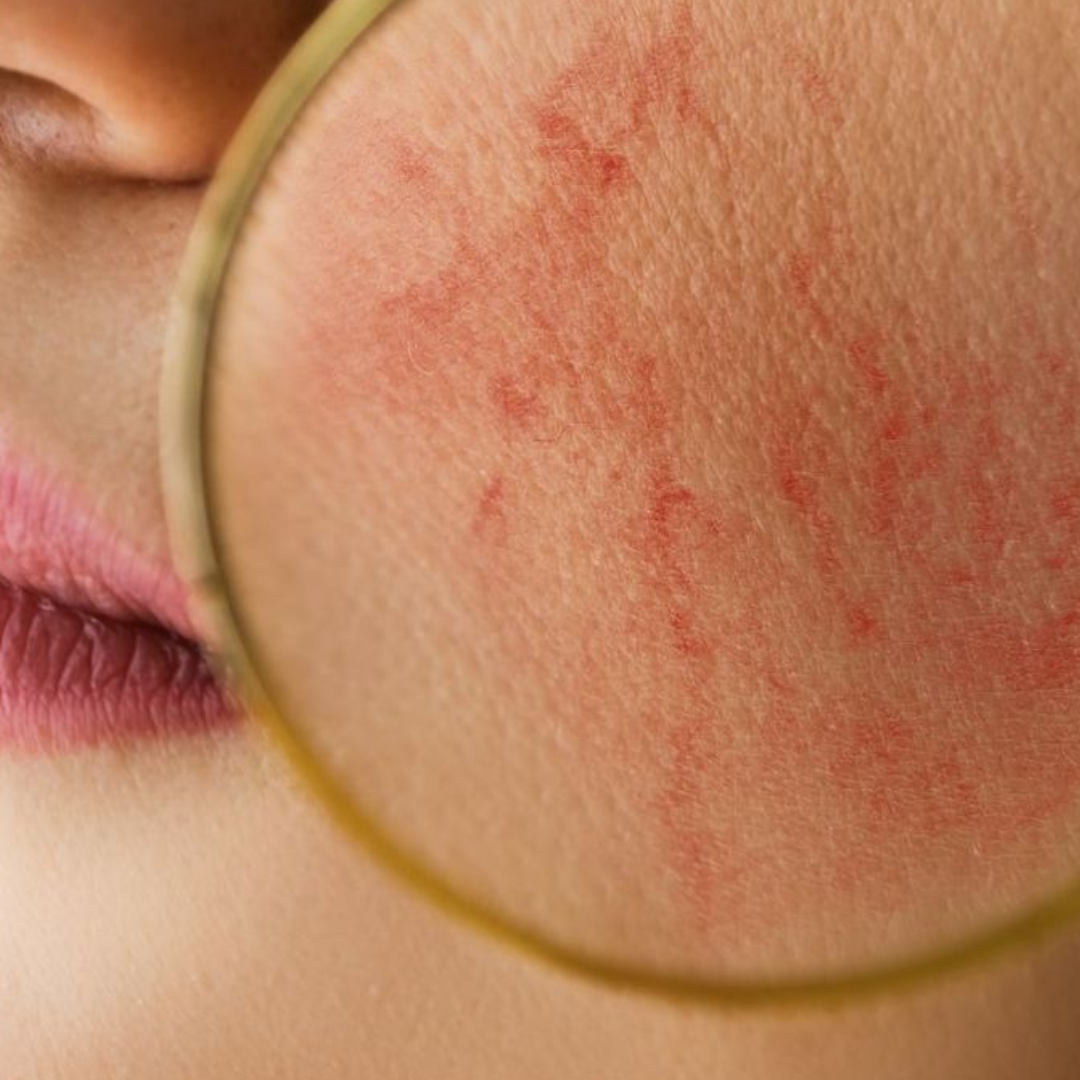
Rosacea: can bakuchiol reduce redness?
Share
Rosacea is a common skin condition that mainly affects the face, manifesting as persistent redness, flushing, visible small vessels and sometimes papules or pustules. It often affects sensitive skin and can be aggravated by the sun, stress or certain harsh cosmetics. Recently, bakuchiol, a natural active ingredient derived from Psoralea corylifolia seeds, has been studied for its anti-inflammatory and regenerative properties. Can it really help to reduce rosacea-related redness and improve the tolerance of sensitive skin?
1. Understanding rosacea
Rosacea is a chronic inflammation of the skin, often localized on the nose, cheeks, forehead and chin. It is characterized by a permanent dilation of the small superficial blood vessels, responsible for the persistent redness. In some cases, papules and pustules appear, giving a similar appearance to acne, but without closed comedones.
The triggers are varied: sun exposure, temperature variations, stress, alcohol, spicy foods, irritating cosmetics or certain medications. Affected individuals often have very sensitive, reactive skin, which complicates the choice of care and treatment.
2. Bakuchiol properties
Bakuchiol is recognized for its anti-inflammatory, antioxidant and regenerative properties. Unlike retinol, it is well tolerated by sensitive skin, and does not cause redness or irritation. It works by promoting cell regeneration, stimulating collagen production and strengthening the skin barrier.
These properties are of particular interest to rosacea sufferers, as they help soothe the skin, limit inflammation and reduce the appearance of redness while respecting skin sensitivity.
3. Bakuchiol and redness: what's the mechanism?
The redness of rosacea is mainly due to inflammation and fragile capillaries. Bakuchiol can intervene on several levels. Firstly, its anti-inflammatory action limits the release of mediators responsible for vasodilatation and redness. Secondly, by reinforcing the cutaneous barrier, it reduces the skin's reactivity to external aggressions, such as temperature variations or chemical irritants.
Regular use of bakuchiol can help to reduce the intensity and frequency of redness, resulting in a more even complexion and soothed skin.
4. Benefits of bakuchiol for rosacea-prone skin
The main advantage of bakuchiol for rosacea sufferers is its exceptional tolerance. Unlike conventional retinol, it does not cause additional stinging, burning or redness. It can be used daily, morning and night, and is easily combined with soothing and protective skin care products.
What's more, its ability to stimulate collagen production helps strengthen skin tissue and limit the visibility of small vessels, helping to improve the overall appearance of the face. The antioxidants present in bakuchiol also protect the skin against oxidative stress and environmental aggressions.
5. Limits and precautions
Although bakuchiol is promising, it is not a cure for rosacea. Persistent redness and inflammatory flare-ups may require the intervention of a dermatologist and the use of specific medical treatments, such as antibiotic creams, anti-inflammatories or laser care.
It's important to introduce bakuchiol gradually and observe skin tolerance. Formulations must be adapted to sensitive skin, without irritating fragrances or preservatives, to avoid aggravating redness.
6. Incorporating bakuchiol into an antirosacea routine
To optimize its effects, bakuchiol can be incorporated into a gentle, protective skincare routine. We recommend applying a serum or cream containing bakuchiol after cleansing, followed by sun protection in the morning to prevent redness from being aggravated by the sun.
Complementary moisturizing and soothing products, such as those containinghyaluronic acid,aloe vera orchamomile extract, are recommended to reinforce the skin barrier and limit skin reactivity. This combination maximizes the anti-inflammatory effect of bakuchiol and reduces the frequency and intensity of redness.
7. Conclusion
Bakuchiol appears to be a promising natural active ingredient for rosacea-prone skin. Its anti-inflammatory, regenerating and antioxidant properties help to soothe the skin, strengthen the cutaneous barrier and limit the appearance of redness. While it does not replace specific medical treatments for rosacea, it is an excellent option for improving skin comfort and overall appearance.
Used in a proper routine, bakuchiol can help maintain a more even complexion, reduce sensitivity and offer a gentle alternative to more irritating actives like retinol.
